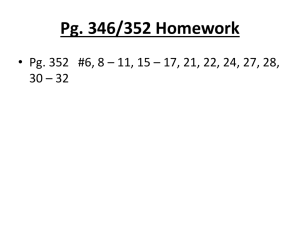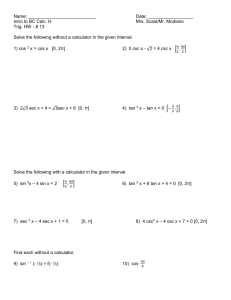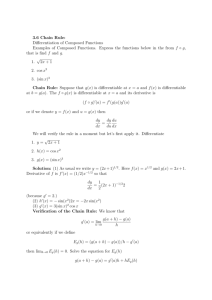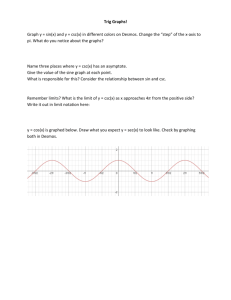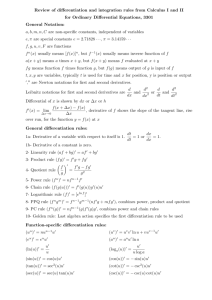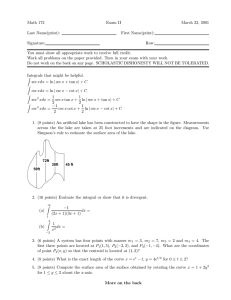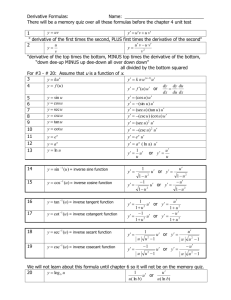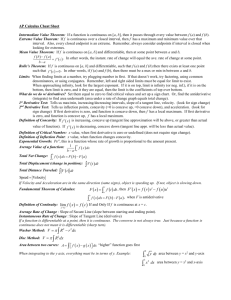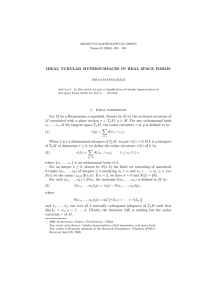4.6 Graphs of Other Trig Functions 1. y = tan x
advertisement
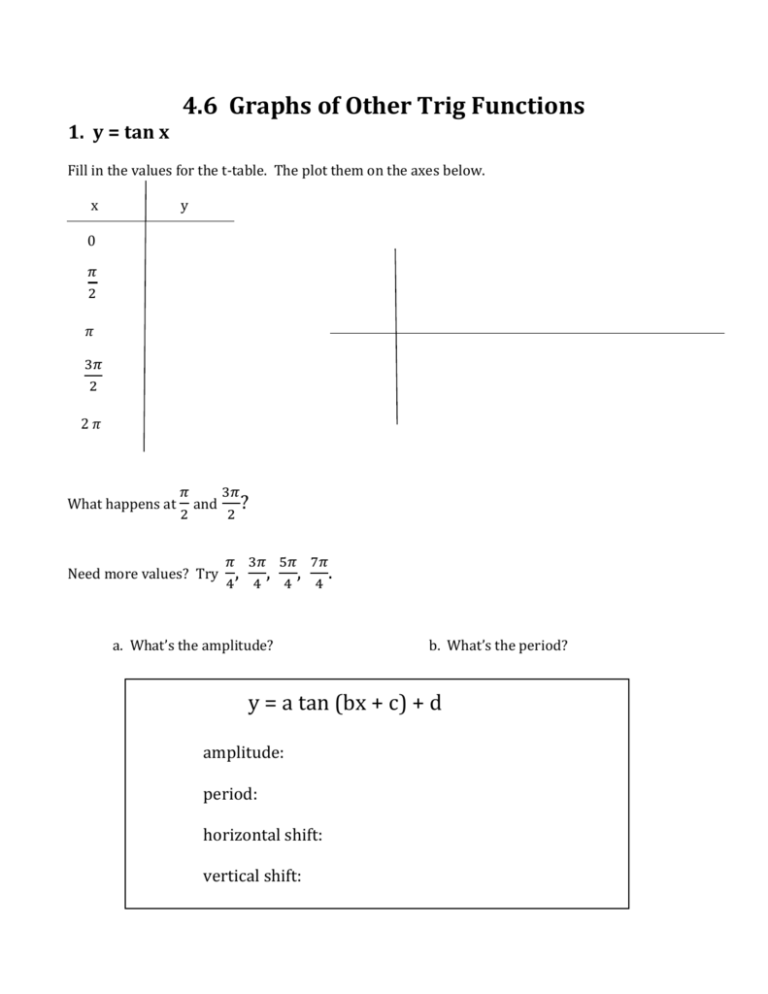
1. y = tan x 4.6 Graphs of Other Trig Functions Fill in the values for the t-table. The plot them on the axes below. x y 0 𝜋 2 𝜋 3𝜋 2 2𝜋 What happens at 𝜋 2 and Need more values? Try 3𝜋 2 ? 𝜋 3𝜋 5𝜋 7𝜋 4 , 4 , 4 , 4 a. What’s the amplitude? . b. What’s the period? y = a tan (bx + c) + d amplitude: period: horizontal shift: vertical shift: Graph this: y = 2tan(2x + π) 2. y = sec x Graph one period of y = cos x on the axes below in pencil. In pen, go back and mark the reciprocal values of the points you plotted. If you need to, find some additional points on the cosine curve and plot their reciprocals. Then connect to graph y = sec x. Ex. Graph y = 4sec x + 2 3. y = csc x Graph one period of y = sin x on the axes below in pencil. In pen, go back and mark the reciprocal values of the points you plotted. If you need to, find some additional points on the sine curve and plot their reciprocals. Then connect to graph y = csc x Ex. Graph y = -2cscx - 1 For y = sec x and y = csc x, list the following: amplitude: period: 4. y = cot x Graph one period of y = tan x on the axes below in pencil. In pen, go back and mark the reciprocal values of the points you plotted. If you need to, find some additional points on the tan curve and plot their reciprocals. Then connect to graph y = cot x. 𝜋 Ex. Graph y = 5 cot (x - 2 ) Graph each equation. 1. y = 3 sec 2x 2. y = ½ tan x 3. y = csc πx – 3 4. y = -sec 3 𝜋 𝑥 5. y = 2cot (x - 2 ) 6. y = -2csc 4x + 2 7. y = 3 tan πx 8. y = ½ cot (x + π) Use the graph to answer the following: a. Find all x-intercepts. b. Find all y-intercepts. c. Find the intervals on which the graph is increasing and is decreasing. d. Find all relative extrema. e. Find all vertical asymptotes. 9. y = tan x 10. y = sec x Graph the function on your calculator. (Choose an appropriate window!) Use the graph to determine the behavior as x → c. a. x → b. x → 𝝅+ 𝟐 𝝅− 𝟐 c. x → − d. x → − 𝝅 (as x approaches 𝟐 from the right) 𝝅 (as x approaches from the left) 𝝅+ 𝟐 𝝅− 𝟐 𝟐 𝝅 (as x approaches − 𝟐 from the right) 𝝅 (as x approaches − 𝟐 from the left) 11. f(x) = tan x 12. f(x) = sec x 13. f(x) = cot x 14. f(x) = csc x
